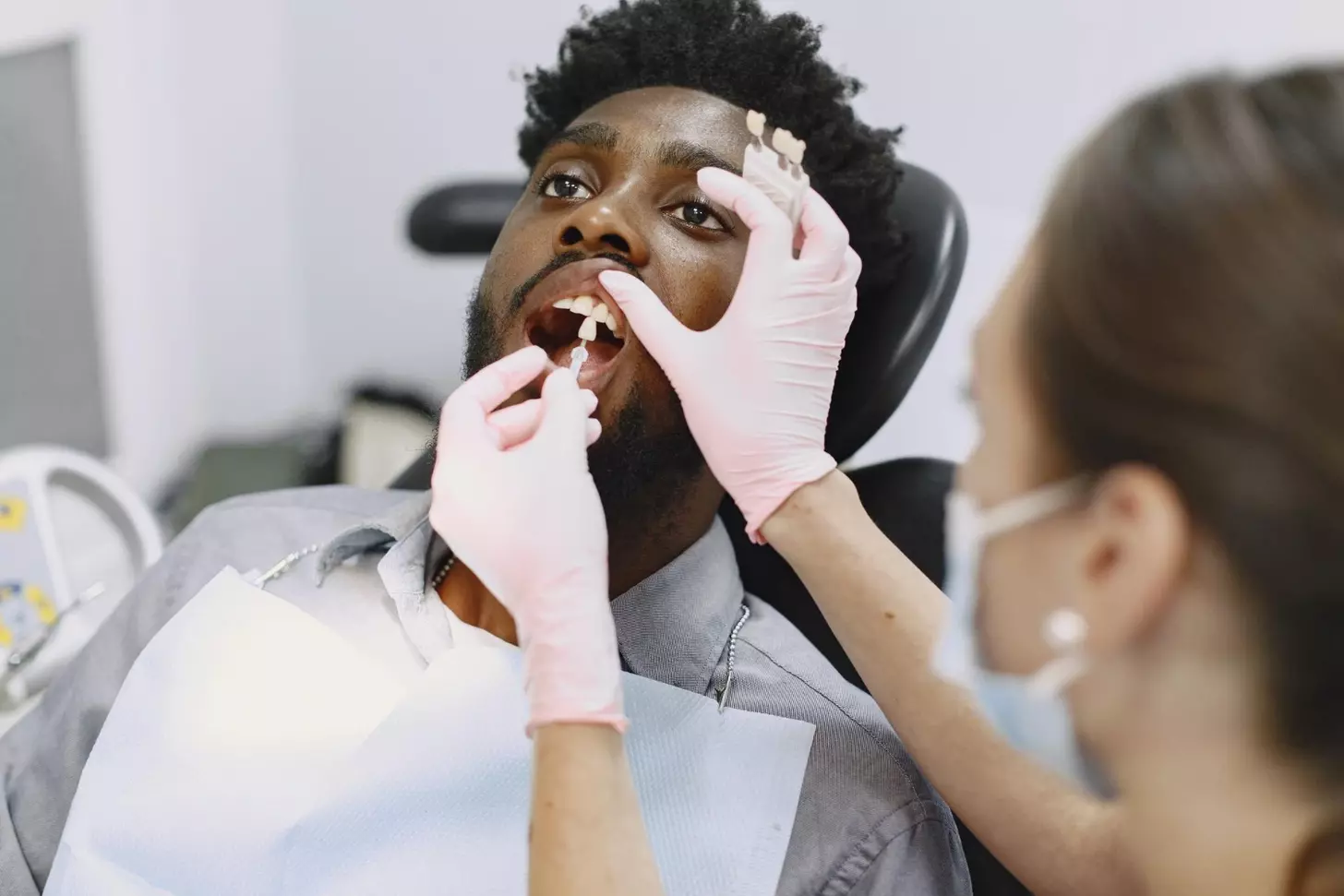Last Updated on November 26, 2025 by Bilal Hasdemir

Diagnostic imaging is key in modern healthcare. It helps doctors see inside the body. This tech is vital for finding, tracking, and treating diseases. It uses advanced tech for precise diagnoses and better health care. What is imaging diagnosis? Our guide explains 7 essential types of medical imaging and their practical uses in healthcare today.
Hospitals like Liv Hospital have many diagnostic imaging services. They offer X-rays, CT scans, MRIs, ultrasounds, and PET scans. These services are key for top-notch health care and support for international patients.
Key Takeaways
- Diagnostic imaging is key for finding and treating diseases.
- Advanced tech like CT scans and MRIs give clear body images.
- Liv Hospital has many diagnostic imaging services.
- Diagnostic imaging leads to better health care.
- Comprehensive imaging services improve patient care.
The Fundamentals of Diagnostic Imaging

Understanding diagnostic imaging is key for doctors and patients. It helps make accurate diagnoses and treatment plans. This field is vital in healthcare, letting us see inside the body.
Definition and Core Concepts
Diagnostic imaging uses technology to show the body’s inside parts. Tools like X-rays, CT scans, MRIs, ultrasounds, and PET scans give us important info.
This field lets us see inside the body without surgery. It’s essential for finding many health issues, like broken bones and tumors.
- X-rays: Good for looking at bones, teeth, and some foreign objects.
- CT Scans: Show detailed images of soft tissues, great for finding problems.
- MRIs: High-resolution images of soft tissues, best for brain and muscle checks.
- Ultrasounds: Use sound waves for images, often used in pregnancy and blood flow checks.
- PET Scans: Look at how cells work, useful for cancer and brain disease checks.
Historical Evolution of Medical Imaging
The history of diagnostic imaging is one of constant progress. It started with Wilhelm Conrad Röntgen’s discovery of X-rays in 1895. Today, we have advanced imaging tech.
New imaging tools have made diagnoses more accurate. MRI, for example, lets us see soft tissues clearly. This has changed how we diagnose brain, spine, and joint problems.
“The discovery of X-rays marked the beginning of a new era in medical diagnostics, paving the way for subsequent innovations in imaging technology.” –
Wilhelm Conrad Röntgen
The Global Impact of Imaging Diagnosis on Healthcare

Imaging diagnostics has changed how we diagnose and treat diseases. It gives us the data needed for early and accurate disease detection. This leads to better health outcomes. With over 3.6 billion imaging studies done every year, its impact is huge.
Statistical Overview: 3.6 Billion Annual Imaging Studies
Every year, over 3.6 billion imaging studies are done worldwide. This shows how important imaging diagnostics is in healthcare. It shows we rely on it a lot for patient care.
The number of studies is growing because imaging tech is getting better and cheaper. This makes it a key tool for finding and managing diseases early.
Contribution to Early Disease Detection
Diagnostic imaging is great at finding diseases early. It gives detailed images of the body’s inside. This helps doctors spot problems early.
- Early Detection: It helps find diseases early, which means better treatment.
- Accurate Diagnosis: It gives accurate diagnoses, which means less wrong treatment.
- Personalized Medicine: It helps make treatment plans that fit each patient.
Improving Treatment Outcomes Through Visualization
Imaging diagnostics helps a lot with treatment planning and doing. It gives detailed images of the body’s inside. This helps doctors plan better treatments.
It makes treatment better in many ways:
- It helps plan precise surgeries.
- It lets doctors check how treatment is going.
- It helps change treatment plans if needed.
In conclusion, imaging diagnosis has a big impact on healthcare worldwide. It helps find diseases early and improves treatment. It’s a key part of modern healthcare.
X-Ray Imaging: The Pioneer of Diagnostic Radiology
X-Ray imaging changed how we diagnose diseases, giving us a new way to see inside the body. It’s a key part of diagnostic imaging, letting doctors see inside without surgery.
Technical Principles and Radiation Physics
X-Ray imaging works by showing how different tissues absorb X-Rays. This makes it possible to see bones, lungs, and soft tissues. Knowing how X-Rays are made and how they work is key to getting good images and keeping patients safe.
The energy of X-Rays is controlled by adjusting the kilovoltage (kVp) and milliamperage (mA) of the X-Ray tube. Higher kVp lets X-Rays go through more, while higher mA makes more X-Rays. Finding the right balance is important for clear images.
Clinical Applications in Orthopedics and Pulmonology
X-Ray imaging is used a lot in orthopedics and pulmonology. In orthopedics, it helps check bone fractures and joint health. It’s very useful for diagnosing and planning treatment for bone and joint problems.
In pulmonology, chest X-Rays help diagnose lung diseases like pneumonia and tumors. They’re quick and useful for emergency and routine checks.
| Clinical Specialty | Common X-Ray Applications | Diagnostic Benefits |
| Orthopedics | Fracture assessment, joint evaluation | Clear visualization of bone structures, monitoring of healing |
| Pulmonology | Lung condition assessment, pneumonia diagnosis | Rapid evaluation of lung pathology, guiding treatment decisions |
Digital Radiography Advancements
Digital radiography has made X-Ray imaging better. It gives clearer images, uses less radiation, and lets doctors adjust images for better diagnosis. These changes make diagnosing diseases faster and more accurate.
Also, digital radiography lets X-Ray images be part of electronic health records (EHRs). This makes it easier to share patient information, helping doctors work together better. This teamwork leads to better care for patients.
Computed Tomography (CT): 3D Cross-Sectional Visualization
CT scanning is key in medical diagnostics. It creates detailed 3D images. We use CT scans to diagnose and treat many medical conditions.
Creating Detailed Images
CT technology combines multiple X-ray measurements from different angles. This makes cross-sectional images of the body’s internal structures. The process involves:
- X-ray tubes emitting X-rays that pass through the body
- Detectors capturing the X-rays and sending the information to a computer
- Computer software reconstructing the images into detailed cross-sectional views
Emergency Medicine Applications
In emergency medicine, CT scans are vital. They help quickly diagnose serious conditions like strokes and internal injuries. We use CT scans to:
- Rapidly assess the extent of injuries from trauma
- Diagnose acute conditions like stroke or pulmonary embolism
- Guide emergency interventions and surgeries
CT scans are fast and accurate. They are essential in emergency departments. They help us make quick decisions that can save lives.
Oncology and Surgical Planning Uses
CT scans are vital in oncology. They help stage cancers and plan treatments. In surgical planning, CT scans give detailed anatomical information. This guides surgeons in complex procedures. The benefits include:
- Accurate tumor staging and assessment
- Precise planning for surgical interventions
- Effective monitoring of treatment response
By providing detailed 3D images, CT scans improve our ability to diagnose and treat complex conditions. This leads to better patient care.
Magnetic Resonance Imaging (MRI): Superior Soft Tissue Contrast
Magnetic Resonance Imaging (MRI) is used more often in medicine. It shows soft tissues clearly, helping doctors diagnose and treat. MRI gives us detailed pictures of the abdomen’s glands and organs, and the structure of joints and bones.
Physics of Magnetic Fields and Radio Waves
MRI works by using nuclear magnetic resonance. Strong magnetic fields and radio waves align hydrogen atoms in the body. These atoms then send signals that create detailed images. MRI’s physics involves complex interactions between magnetic fields and body tissues.
Neurological and Musculoskeletal Applications
MRI is great for the brain and muscles. It helps find problems like stroke, multiple sclerosis, and spinal cord injuries. For muscle and bone issues, MRI shows tendons, ligaments, and cartilage. This helps diagnose tears, strains, and other injuries.
| Application | Description | Benefits |
| Neurological | Diagnosing stroke, multiple sclerosis, spinal cord injuries | Early detection, precise diagnosis |
| Musculoskeletal | Examining tendons, ligaments, cartilage for injuries | Accurate assessment of soft tissue damage |
Functional and Specialized MRI Techniques
Functional MRI (fMRI) tracks brain activity by looking at blood flow changes. It’s key for mapping brain functions before surgery. Other MRI methods, like diffusion-weighted imaging and magnetic resonance angiography, give more info on tissue and blood vessels.
We keep improving MRI technology for better results. MRI’s clear images and wide uses make it a key tool in medical imaging.
Ultrasound Imaging: Non-Ionizing Real-Time Diagnostics
Ultrasound technology gives us real-time images of the body’s inside without ionizing radiation. This makes it safe, even for pregnant women.
Sound Wave Principles in Medical Imaging
Ultrasound uses sound waves to create images. A transducer on the skin sends out high-frequency sound waves. These waves bounce back when they hit different tissues.
The transducer catches these echoes and turns them into images. The sound wave frequency can change, usually from 2 to 15 MHz. The right frequency depends on the task and how deep it needs to go.
Key aspects of ultrasound technology include:
- Non-invasive and safe
- Real-time imaging capabilities
- No ionizing radiation
- Portable and relatively low-cost
Obstetric and Gynecological Applications
Ultrasound is key in obstetrics for tracking fetal growth. It shows how the baby is doing and can spot problems early.
In gynecology, it checks the reproductive organs. It can find issues like cysts or fibroids. It also helps with procedures like biopsies or egg retrieval for IVF.
“Ultrasound has become an indispensable tool in obstetrics, allowing us to monitor fetal health and detect possible issues early on.”
Cardiovascular and Abdominal Diagnostics
Ultrasound is also used for heart checks. It looks for heart problems like valve issues or fluid around the heart. Echocardiography, a type of ultrasound, gives detailed heart images.
In the abdomen, it examines organs like the liver, gallbladder, kidneys, and pancreas. It can spot gallstones, liver disease, and other issues.
Ultrasound imaging is a flexible and important tool. It shows the body’s inside in real-time without the dangers of ionizing radiation.
Nuclear Medicine and PET Scans: Metabolic and Functional Assessment
We use nuclear medicine and PET scans to look at how the body works. This helps us diagnose diseases better. Nuclear medicine uses special substances to show how the body uses energy, giving us important clues for health issues.
Radiopharmaceuticals and Tracer Technology
Radiopharmaceuticals are special substances that light up when scanned. They help us see inside the body. This technology uses tiny amounts of radioactive material to find specific areas, like tumors.
The right substance depends on what we’re looking for. For example, Fluorodeoxyglucose (FDG) is used in PET scans to see how cells use sugar. This is very helpful in finding cancer.
Oncology Applications and Cancer Staging
Nuclear medicine and PET scans are key in fighting cancer. They help us see how big the cancer is and if treatments are working. PET scans with FDG show active tumors and help track cancer spread.
- Cancer Diagnosis: PET scans spot cancer by showing where cells are busy.
- Tumor Staging: Knowing the size helps decide the best treatment.
- Treatment Monitoring: PET scans check if treatments are working.
Cardiac and Neurological Functional Imaging
Nuclear medicine also helps with heart and brain health. In cardiology, it checks blood flow to the heart. This finds problems like blockages.
In neurology, PET scans look at brain function. They help find diseases like Alzheimer’s by spotting specific markers.
Nuclear medicine and PET scans give us deep insights into the body. They help us understand and treat many diseases, from cancer to brain disorders.
Fluoroscopy: Dynamic X-Ray Visualization
Fluoroscopy is a way to see inside the body in real-time. It’s used for both checking for problems and for treatments. This method is key in today’s medicine, helping doctors see how the body works as it happens.
Real-Time Imaging Principles
Fluoroscopy uses a steady X-ray beam to show images on a screen. This lets doctors watch moving parts or tools inside the body. It’s done with a fluoroscope, which has an X-ray source and a screen or detector.
Key benefits of fluoroscopy’s real-time imaging include:
- Immediate visualization of bodily functions and instrument placement
- Enhanced accuracy in diagnostic and interventional procedures
- Reduced need for additional imaging modalities in certain cases
Gastrointestinal and Urological Studies
Fluoroscopy is very important for looking at the gut and urinary system. It’s used in tests like barium swallow studies to see the esophagus. It’s also used in barium enemas to check the colon.
Some common applications include:
- Swallowing studies to diagnose dysphagia
- Evaluation of gastrointestinal tract obstruction or perforation
- Assessment of vesicoureteral reflux in pediatric patients
Interventional Procedure Guidance
Fluoroscopy helps guide many treatments, giving doctors a clear view of where to place tools. This is key for things like angiography, where it helps guide catheters through blood vessels. It’s also used for putting in stents or other devices.
“Fluoroscopy has revolutionized the field of interventional radiology, enabling complex procedures to be performed with greater precision and safety.” – An Expert Interventional Radiologist
Fluoroscopy is a big help in both checking for problems and in treatments. It makes patient care better and leads to better results.
Emerging Technologies in Diagnostic Medical Imaging
New technologies are changing how we use diagnostic medical imaging. They make it more accurate and effective. We’re seeing big steps forward in areas like artificial intelligence, molecular imaging, and portable devices.
Artificial Intelligence in Image Interpretation
Artificial intelligence (AI) is now a big part of medical imaging. It helps doctors understand images better and faster. AI can look through lots of data quickly, spotting things humans might miss.
AI can find patterns in images that are hard for us to see. This could lead to fewer mistakes and better care for patients.
| AI Application | Description | Benefits |
| Image Analysis | AI algorithms analyze medical images to detect abnormalities | Improved diagnostic accuracy, reduced interpretation time |
| Pattern Detection | AI identifies patterns in images that may not be visible to humans | Enhanced detection of diseases at early stages |
Molecular Imaging Advancements
Molecular imaging is getting a lot better too. It lets us see what’s happening at the molecular level. This means we can find diseases early and tailor treatments better.
Techniques like PET and SPECT are getting better with new tools. This makes them more accurate and useful.
Portable and Point-of-Care Imaging Solutions
New, portable imaging tools are making things easier for doctors. They can do scans right at the patient’s side or in remote places. This is great for emergencies or places far from big hospitals.
Things like portable ultrasound machines and handheld X-rays are examples. They’re super useful in tight spots.
As these new technologies keep getting better, we’ll see even more progress in medical imaging. This will lead to better health care and outcomes for everyone.
Clinical Decision Making Through Imaging and Diagnostics
Diagnostic imaging is key in making clinical decisions. It gives vital info that helps doctors diagnose and treat patients well. We use different imaging methods to make sure patients get the right care.
Appropriate Use Criteria
Using diagnostic imaging wisely is important. Appropriate use criteria help decide the best imaging for each patient. This makes sure we get accurate results and avoid too much radiation or cost.
We look at many things when using these criteria. We consider the patient’s health history, symptoms, and how the imaging will affect treatment. This helps us avoid bad outcomes and use resources well.
Multidisciplinary Approach to Image Interpretation
A multidisciplinary approach is key for accurate diagnosis and treatment planning. Radiologists, clinicians, and other experts work together. They make sure imaging results fit with the patient’s full medical picture.
| Specialty | Role in Image Interpretation |
| Radiologists | Provide expert interpretation of imaging studies |
| Clinicians | Correlate imaging findings with clinical presentation and medical history |
| Surgeons | Use imaging findings to inform surgical planning and decision-making |
Cost-Effectiveness and Healthcare Resource Allocation
Diagnostic imaging’s cost-effectiveness is important for healthcare resources. We aim to get quality imaging without breaking the bank. Using the right criteria and new imaging tech helps us manage costs while keeping care high.
In summary, diagnostic imaging is vital for making clinical decisions. Its effective use depends on careful criteria, teamwork, and cost management. By being thoughtful and informed in our use of imaging, we can improve patient care and outcomes.
Patient Experience and Safety in Diagnostic Imaging
Patient-centered care is key in diagnostic imaging. We know that getting imaging tests can make people anxious. So, we make sure they feel safe and comfortable.
Preparation Guidelines for Different Modalities
Getting ready for imaging tests is important. Patients need clear instructions for their specific test. For example, MRI patients must remove metal and might feel claustrophobic.
CT scan patients with contrast need to fast and stay hydrated. We teach patients about the test, what to expect, and how to stay calm. This helps them cooperate better, leading to better results.
Radiation Safety and Dose Optimization
Radiation safety is a big deal in imaging, like X-rays and CT scans. We follow ALARA (As Low As Reasonably Achievable) to keep doses low. This means using the least amount of radiation needed for good images.
New tech has cut radiation doses a lot. Modern CT scanners use less radiation than old ones. We also keep our safety protocols up to date.
Managing Claustrophobia and Procedure Anxiety
Claustrophobia and anxiety are big worries for some patients, like those getting MRI or CT scans. We’re compassionate and offer help like open MRI machines and sedation for anxious patients.
We also talk to patients before the test to explain what will happen. This helps lower their anxiety. Having a caring staff there during the test also helps patients feel better.
By focusing on patient experience and safety, we make sure imaging tests are not just effective but also comfortable for everyone.
Conclusion: The Future Landscape of Diagnostic Imaging
Diagnostic imaging is key in today’s healthcare. It helps doctors make accurate diagnoses and plan treatments. Modalities like X-ray, CT, MRI, ultrasound, and nuclear medicine have changed medicine. They let doctors see the body in great detail.
Thanks to imaging, doctors can spot problems early and with more accuracy. This leads to better care for patients. The future of imaging looks bright, with new tech like artificial intelligence and molecular imaging on the horizon.
New technologies will keep improving diagnostic imaging. This means doctors will be able to diagnose and treat diseases more effectively. We’re looking forward to seeing how these advancements will improve healthcare for everyone.
FAQ
What is diagnostic imaging?
Diagnostic imaging uses different methods to create images inside the body. It helps doctors diagnose and treat health issues.
What are the 7 key types of diagnostic imaging?
The main types are X-ray, Computed Tomography (CT), and Magnetic Resonance Imaging (MRI). Others include Ultrasound, Nuclear Medicine, Positron Emission Tomography (PET) scans, and Fluoroscopy.
What is the difference between diagnostic imaging and diagnostic radiology?
Diagnostic imaging is a wide term for many techniques. Diagnostic radiology focuses on using X-rays and other radiation to see inside the body.
How has diagnostic imaging evolved over time?
It has changed a lot, from X-rays to advanced tech like CT, MRI, and PET scans. These newer methods give clearer and more accurate images.
What is the role of artificial intelligence in diagnostic imaging?
Artificial intelligence helps improve how images are read and analyzed. It also helps find problems and make diagnoses more accurate.
How does diagnostic imaging contribute to early disease detection?
It lets doctors find diseases early. This means they can start treatments sooner, which can lead to better results.
What are the benefits of using ultrasound imaging?
Ultrasound is safe and shows images in real-time. It’s great for checking on babies, the heart, and the abdomen without harm.
How does radiation safety impact diagnostic imaging?
Keeping safe from radiation is key, mainly with X-rays and CT scans. This helps reduce risks and get the best images.
What is the significance of diagnostic imaging in clinical decision-making?
It’s very important for making decisions about patient care. It helps doctors choose the right treatments and manage health effectively.
How is diagnostic imaging used in oncology?
In cancer care, imaging like CT, MRI, and PET scans is used. They help find, check, and track cancer, guiding treatment plans.
What are the emerging technologies in diagnostic medical imaging?
New tech includes better molecular imaging and portable solutions. Artificial intelligence is also being used to improve image analysis.
References
- Kanal, E., Barkovich, A. J., Bell, C., Borgstede, J. P., Bradley, W. G., & Bickley, H. (2013). ACR Guidance Document for Safe MRI Practices: 2013 Update. Journal of Magnetic Resonance Imaging, 37(3), 501–530. https://www.ncbi.nlm.nih.gov/pmc/articles/PMC4009116/
- Lamb, G. W. (2020). Computed Tomography: Diagnostic Applications, Radiation Safety, and Advancements. British Journal of Radiology, 93(1111), 20190853.https://www.ncbi.nlm.nih.gov/pmc/articles/PMC7212140/






